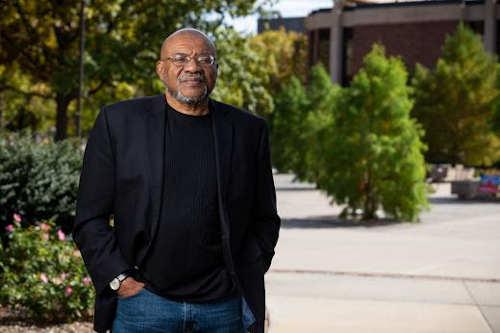- Tim Riley
- Posted On
‘Massive Talent’ spoofs a film legend; TCM Festival finale
‘THE UNBEARABLE WEIGHT OF MASSIVE TALENT’ Rated R
Nicolas Cage as a fictionalized version of himself in “The Unbearable Weight of Massive Talent” has odd parallels to troubled legal, real estate and tax issues in his past.
For all his perceived quirks, Cage is more than just an actor. In the words of director/co-writer Tom Gormican, Cage has become not only “a cultural figure,” but the “patron saint of strangeness” and this film sets out to prove it.
In the dramatized tale of this film, Cage is first seen deep into compounding his personal and professional difficulties. His career is floundering and huge debts are about to put him out on the streets.
Divorced from makeup artist Olivia (Sharon Horgan) and not relating well to their teen daughter Addy (Lily Sheen), Cage receives the distressing news that he’s not getting a great role that could easily launch his comeback.
Hallucinating at times with the surreal presence of his younger self named Nicky, apparently from his “Wild at Heart” era, Cage is admonished that he’s a movie star and not an ordinary mortal dealing with family and career issues.
But the best that his smarmy agent Richard Fink (Neil Patrick Harris) can come up with is a strange invitation to collect one million dollars to attend the birthday celebration of obsessed fan Javi Gutierrez (Pedro Pascal).
With no other options on how to pay $600,000 owed to his hotel residence, Cage ends up as the guest of honor at the eccentric billionaire’s oceanfront estate on the Spanish island of Mallorca.
The movie-obsessed Javi, who includes “Paddington 2” as one of his personal favorites, maintains his own little museum of Nicolas Cage memorabilia, including film props and a life-size wax figure brandishing two golden handguns.
Bonding over a love of cinema, Javi persuades Cage to take a look at a screenplay that offers a chance for their incipient friendship to evolve into a working collaboration that could easily be a caricature of Hollywood fantasy.
The wrinkle to this tale of fandom is that Javi is an international arms dealer, and two CIA agents (Tiffany Haddish and Ike Barinholtz) enlist Cage on a spy mission to rescue a kidnapped daughter of a political leader.
The movie turns into the kind of action thriller that was once the staple of Cage’s career, and now he’s mired in his screen persona of confronting thugs in the Gutierrez crime family with some gunplay and a car chase through quaint Spanish streets.
More than anything, “Massive Talent” places Cage in absurd situations of living up to his own legend, channeling his most iconic screen characters in order to save himself and his loved ones.
TCM CLASSIC FILM FESTIVAL FINALE
The 13th TCM Classic Film Festival, or as I prefer to call it the 11th because the last two gatherings were virtual, came to an end with the usual flourish.
Classic films on display include fan favorites that most cinephiles have already enjoyed over the years. It’s great to see Humphrey Bogart in “Key Largo” or Paul Newman and Robert Redford in “The Sting” on the big screen.
On the last day of the festival, the better option was to choose films not as readily available. Watching Piper Laurie and Rock Hudson as young actors in 1952’s “Has Anybody Seen My Gal” was a welcome treat.
Ostensibly, the star was Charles Coburn in the role of aging bachelor Samuel Fulton, a millionaire without an heir, who wants to find out if the family of the woman who rejected his marriage proposal decades ago deserves to inherit his fortune.
Fulton finagles his way into the home of the Blaisdell family as a boarder under an assumed name and arranges for them to receive an unexpected windfall and sits back to observe the results of his anonymous beneficence.
The family patriarch (Larry Gates), who runs a pharmacy and soda fountain in a small town, is prompted by his social-climbing wife (Lynn Bari) to sell the family home and business in order to relocate to a wealthy neighborhood.
Piper Laurie’s Millicent, the eldest Blaisdell daughter, is romantically linked to Rock Hudson’s soda jerk Dan Stebbins, but her disapproving mother tries to arrange a marriage with a rich socialite.
The nouveau riche status of the Blaisdells is soon derailed by poor decisions, and the family finds themselves broke and returning back to their old lives. Yet, everyone seems to be happier, and a life lesson proves that the grass is not always greener on the other side
“Has Anybody Seen My Gal” is a remarkably agreeable and charming comedy, mostly due to Coburn’s bluffing his way into an ordinary lifestyle, going so far as to train as a soda jerk with hilarious mishaps.
A bonus for film buffs at the screening was seeing James Dean in a cameo appearance as a soda fountain customer and hearing from Piper Laurie in person that Charles Coburn’s fondness for pinching young ladies was problematic even back then.
Tim Riley writes film and television reviews for Lake County News.








